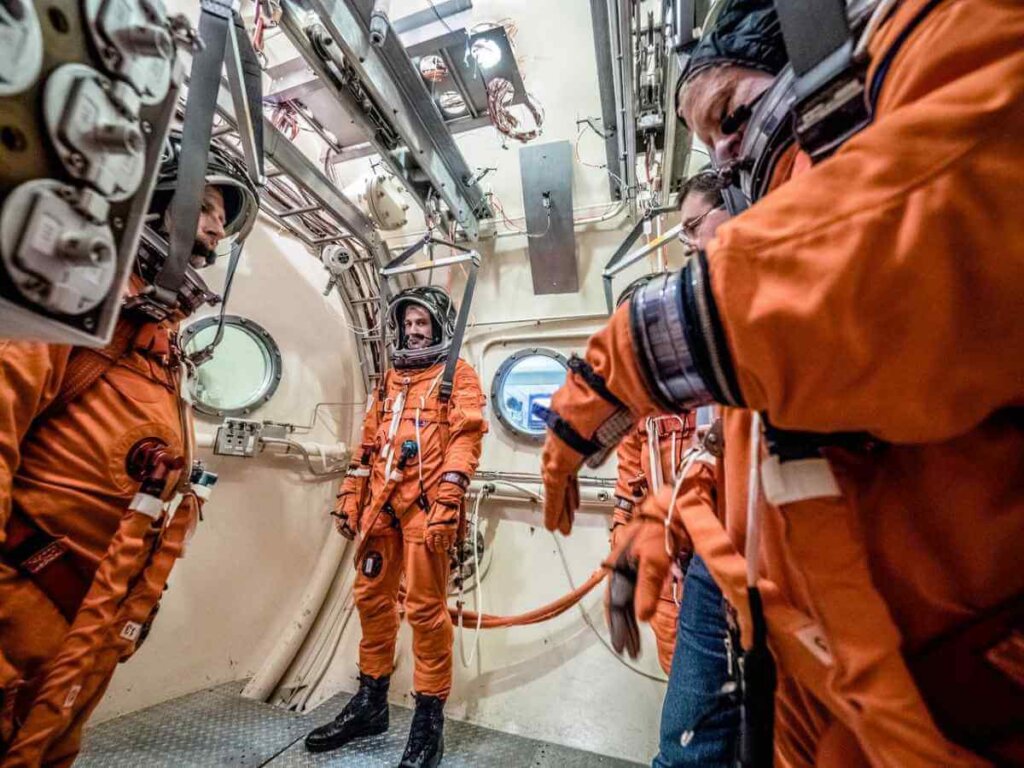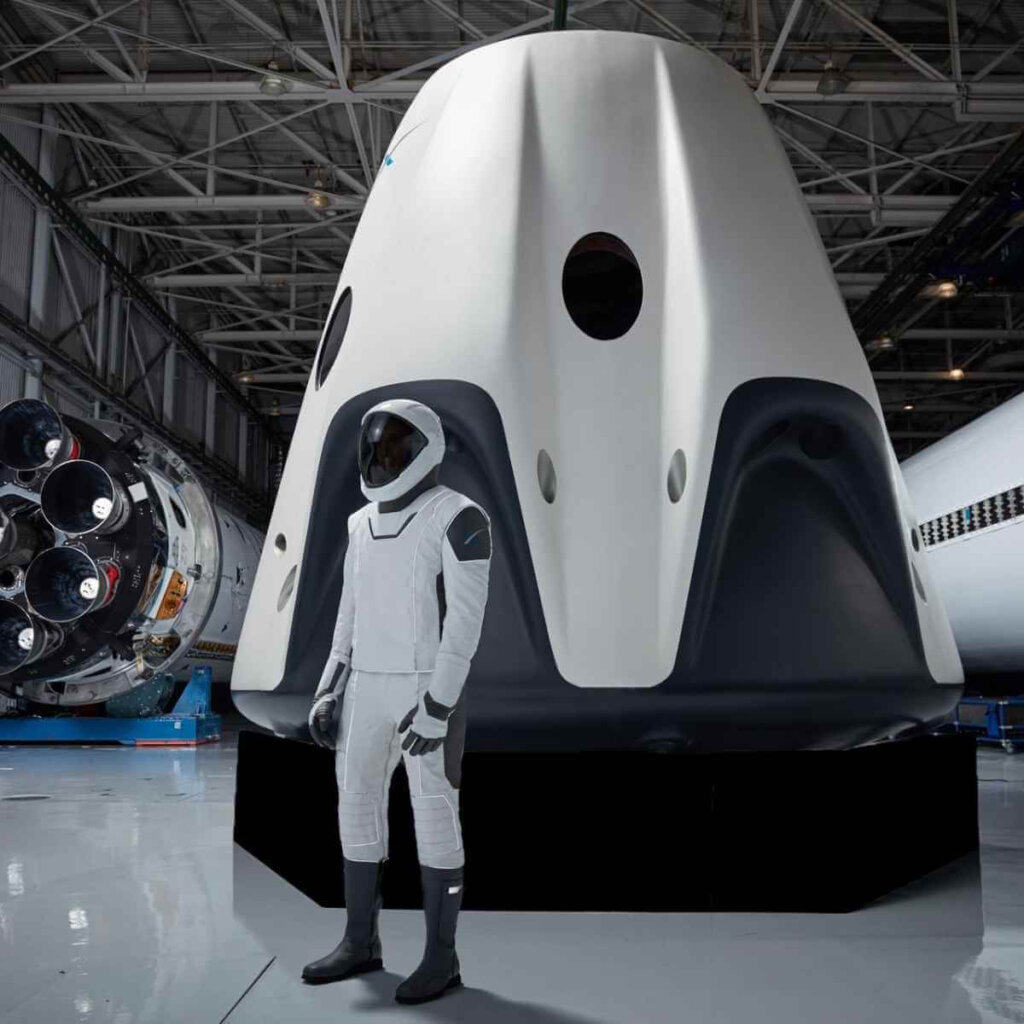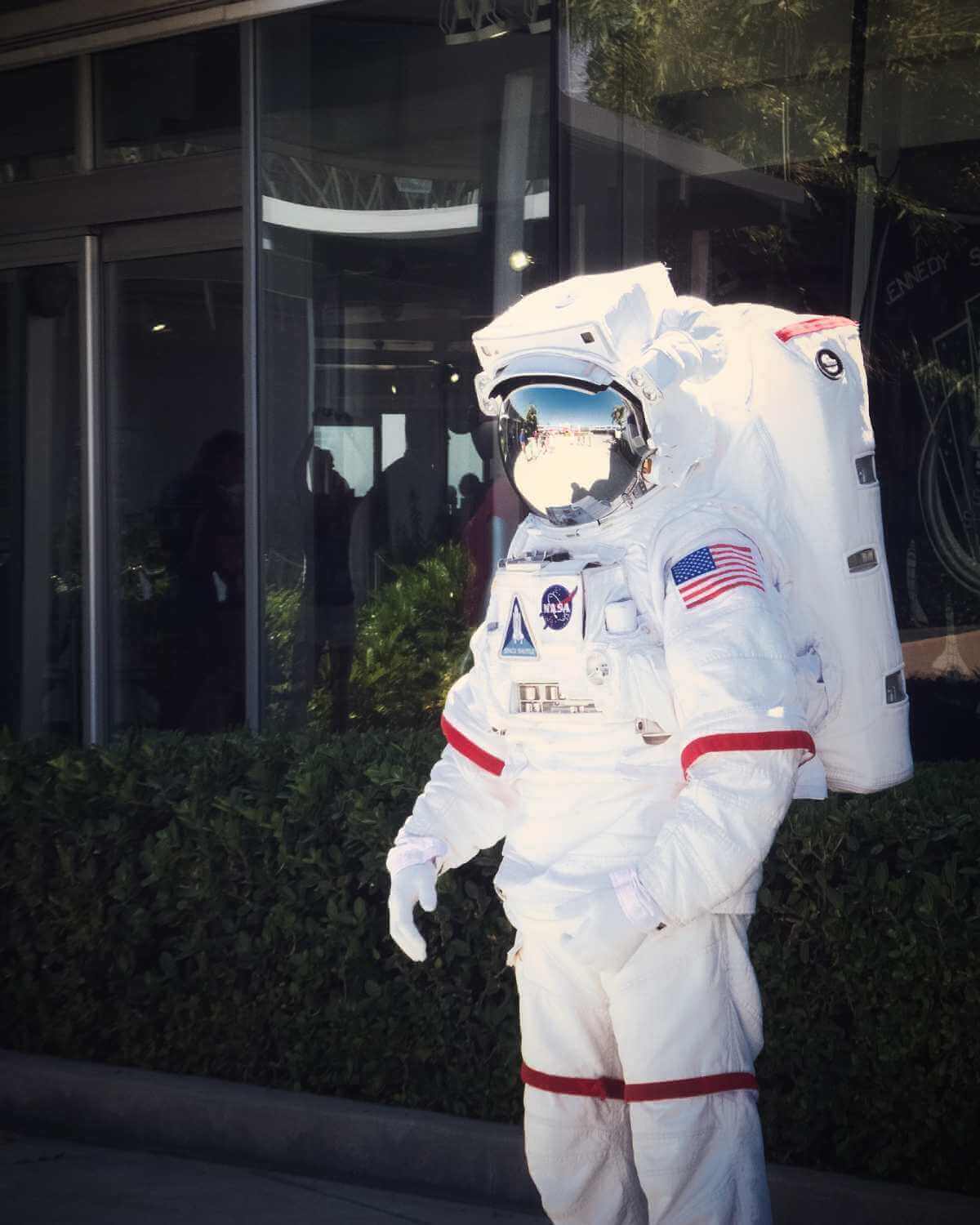Have you ever looked up at the sky and imagined astronauts floating in space, their suits gleaming like stars against the backdrop of the universe? It’s difficult not to wonder why are astronauts’ suits white, but it turns out this choice is far from arbitrary or purely cosmetic. There are specific reasons why white was chosen as the prevailing color for spacesuits.
In this comprehensive article, we’ll dive into the world of spacesuit design, discussing the importance of color choice in these vital garments, the specific advantages of white in the unforgiving environment of outer space, the historical evolution of spacesuit colors, and what the future may hold for the design of these essential pieces of equipment for space exploration.
Importance of Spacesuit Colors
Spacesuits serve as a critical lifeline for astronauts, shielding them from the extreme conditions and potential hazards they encounter in the unforgiving vacuum of space. Therefore, every detail matters when designing these essential garments, and color choice is no exception.
In fact, the color of a spacesuit is just as crucial as the materials used and the overall design of the suit itself.
The color of a spacesuit can significantly impact various aspects of an astronaut’s experience during a space mission. It directly influences the astronaut’s safety by affecting factors like temperature regulation, protection from harmful radiation, and resistance to space debris.

Additionally, the chosen color is pivotal in ensuring high visibility, which is crucial for the astronauts and the ground crew monitoring their progress during spacewalks.
Ultimately, the choice of color contributes to the astronaut’s overall well-being, as it can enhance their comfort and help reduce the physical and mental strain associated with operating in a harsh space environment.
The Role of White in Space
White has become the predominant color for spacesuits due to its numerous advantages in space’s harsh environment. Why are astronauts’ suits white, and how does it contribute to their safety and efficacy during space missions?
Temperature Regulation
The sun’s rays can heat surfaces to 250°F (121°C), while the temperature in the shade can drop as low as -250°F (-157°C). As a result, white is an excellent choice for spacesuits because it reflects most of the sun’s light and heat, keeping astronauts cooler during spacewalks and reducing the need for additional cooling systems.
Visibility and Identification
During space missions, particularly when astronauts venture outside their spacecraft, they must be easily recognizable. White spacesuits offer heightened visibility against the contrasting darkness of space.

This increased visibility simplifies the process of astronauts locating one another and assists ground control teams in closely tracking their progress throughout spacewalks.
Protection from Space Debris and Radiation
White spacesuits provide an extra layer of defense against space debris and dangerous radiation. The spacesuit’s outer layers are crafted from materials possessing exceptional reflective properties, aiding in the deflection of tiny particles and reducing the effects of radiation on the astronaut’s body, thus ensuring their safety during space missions.
Evolution of Spacesuit Colors
The color of spacesuits has evolved over time. Let’s briefly examine the history of spacesuit colors and the transition to white.
Early Spacesuits
During the initial stages of space exploration, spacesuits didn’t always sport the now-familiar white hue. Instead, Russian cosmonauts donned vibrant orange suits, while their American counterparts opted for metallic silver attire.

The design priorities of these early spacesuits centered around concerns such as pressure regulation and maneuverability instead of emphasizing visibility and thermal management.
As our understanding of the demands of space travel evolved, so too did the design focus, ultimately leading to the adoption of white as the standard color for spacesuits to enhance visibility and ensure effective thermal control.
The Transition to White
As space missions grew increasingly intricate and challenging, the design of spacesuits evolved to prioritize the safety and efficiency of astronauts. During the late 1960s, NASA made a pivotal decision to transition to white spacesuits as part of the Apollo program.

This shift was driven by the recognition of the advantages offered by the color white. In the years that followed, white has solidified its status as the standard color for spacesuits, with space agencies worldwide adopting this color choice to ensure the safety and effectiveness of their astronauts during space missions.
Materials and Design of White Spacesuits
The effectiveness of white spacesuits is due to their color and the materials and design used in their construction.
Outer Layer Materials
The outer layer of a spacesuit is typically made of materials like Teflon, Kevlar, and Nomex, known for their excellent durability, robustness, and ability to endure significant temperature variations.
By incorporating white pigmentation into these high-performance materials, spacesuit designers effectively enhance the protection and temperature regulation capabilities required to ensure astronauts’ safety and comfort during extravehicular activities, such as spacewalks.
Multilayer Insulation
Spacesuits utilize multilayer insulation (MLI) to enhance temperature regulation and radiation protection further. MLI consists of multiple layers of thin, reflective materials between the outer layer and the inner pressure garment. This design helps to maintain a stable temperature inside the spacesuit and minimizes the effects of harmful radiation.
Alternatives to White Spacesuits
Although white is the current standard for spacesuits, there has been research and discussion about the potential advantages and challenges of using different colors for spacesuits.
Advantages of Other Colors
There is an ongoing debate among researchers and space enthusiasts about the potential benefits of incorporating alternative colors, such as vivid orange or yellow, in spacesuit design. These colors may offer superior visibility under particular conditions, such as when astronauts work in shadowed or dimly lit areas, making it easier to keep track of their fellow crew members.

Furthermore, during complex spacewalks or missions with multiple astronauts working simultaneously on various tasks, using different colors could facilitate the differentiation between crew members, enabling more efficient communication and coordination.
Additionally, incorporating specific colors into spacesuit designs could serve as a visual indicator of an astronaut’s rank, role, or the nature of their mission.
For instance, mission commanders could wear a distinct color, making it easier for other astronauts to identify them in case they need guidance or assistance. Similarly, astronauts specializing in specific tasks, such as robotics or extravehicular repairs, could don a unique color to denote their area of expertise.
Challenges with Non-White Spacesuits
Despite the potential benefits of using different colors for spacesuits, several challenges make implementing these changes difficult. The most significant challenge is temperature regulation.
Non-white colors would absorb more heat from the sun, making it challenging to maintain a comfortable and safe temperature inside the spacesuit. Additionally, changing the color of spacesuits could require new materials and designs, which would entail significant research and development costs.
The Future of Spacesuit Design
As technology advances and our understanding of the space environment improves, the design of spacesuits will continue to evolve.
Technological Advancements
Future spacesuits may incorporate advanced materials, smart fabrics, or augmented reality systems to improve astronaut safety and performance. These innovations could change the requirements for spacesuit colors or allow for alternative colors without compromising safety.

Potential Color Changes
As new materials and technologies become available, exploring alternative color options for spacesuits may be possible. However, any changes must consider the implications of temperature regulation, visibility, and protection from space debris and radiation.
Final Thoughts
In summary, the answer to why are astronauts’ suits white is because of the numerous benefits that white offers regarding temperature regulation, visibility, and protection from space debris and radiation.
While there are potential advantages to using other colors for spacesuits, the challenges and risks currently outweigh the benefits. As technology advances, the future of spacesuit design may bring new possibilities for color choices, but white remains the standard for astronaut suits in space.

